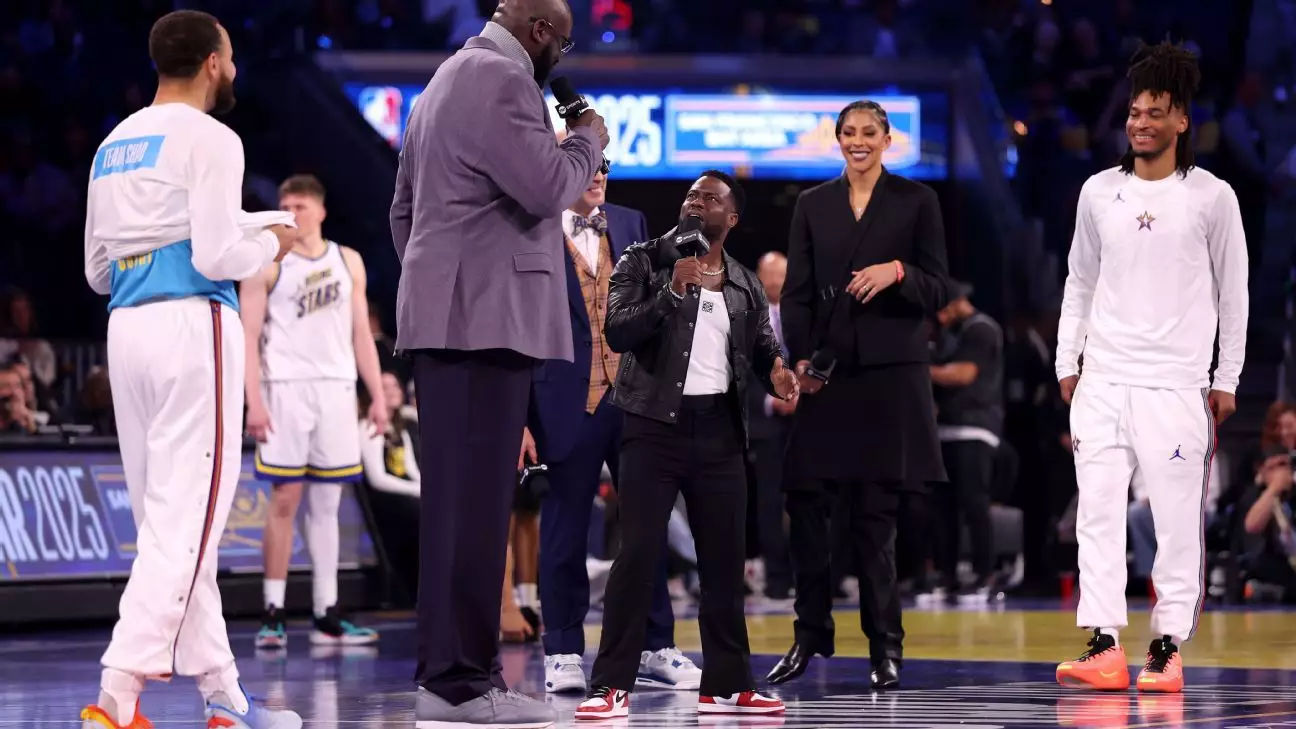The NBA All-Star Game is traditionally a premier showcase of basketball talent, but this year’s tournament format has sparked both excitement and controversy. Transitioning from the conventional East vs. West format, the league introduced a four-team, single-elimination structure aimed at injecting fresh energy into this beloved All-Star tradition. Although the night featured compelling performances from some of basketball’s brightest stars, the execution of the new format raised questions and prompts thoughtful discussion about how to enhance the experience for players and fans alike.
The departure from the East-West rivalry was intended to provide a more entertaining viewing experience. Teams drafted by TNT’s “Inside the NBA” analysts, including notable personalities like Charles Barkley and Shaquille O’Neal, certainly added excitement. Each team had a target score of 40 points, intended to create fast-paced, high-scoring games. This fresh take on the All-Star Game was lauded for its intention to make the event more engaging.
However, the excitement was somewhat overshadowed by interruptions, particularly with extended breaks between games. Players notably expressed dissatisfaction with the increased downtime, which they felt detracted from the competitive nature of the event. For instance, Trae Young’s candid critique highlighted the overall sentiment—while he was keen on the action, the desire for a smoother flow of play prevailed. Young’s observations echoed a wider concern among players that the frequent halts interrupted their rhythm and, arguably, the enjoyment level for fans.
Amidst the bravado and entertainment, player sentiments reveal a nuanced perspective on what makes an All-Star Game enjoyable. Many participants noted that while the atmosphere remained fun, the excessive breaks impacted their desire for a more competitive spirit. Jaylen Brown and Shai Gilgeous-Alexander echoed similar thoughts, with Brown specifically pointing out the tension between competitiveness and the fun element that is central to All-Star Weekend.
Stephen Curry, the standout player who took home the MVP trophy after scoring 12 points in the championship game, conveyed his commitment to innovation within the All-Star format. His contribution to discussions with NBA leadership illustrates a proactive approach from top players to shape the future of exhibition games. Yet, it is clear there is a disconnect between the new format’s intentions and its execution.
One significant downside to this year’s festivities was the absence of some marquee names commonly associated with the All-Star Game. Stars like LeBron James and Giannis Antetokounmpo were sidelined due to injury, leaving a noticeable gap in the lineup that impacted the game’s allure. While the format attempted to keep the excitement high with rising talents, this reliance on less established players drew criticisms from veteran stars like Draymond Green. He expressed a nostalgic reflection on the All-Star experience, lamenting the shift from a more exclusive pool of talent to the inclusion of newer players who may not have the same legacy.
Despite the format’s attempt to engage younger fans, many veteran players felt that it weakened the game’s prestige. The juxtaposition of seasoned competitors against a backdrop of rookies created an imbalance that highlighted a departure from traditional All-Star caliber competition.
Considering the variety of opinions surrounding the new format, it’s clear that a major consideration for future All-Star games should be striking the right balance between innovation and tradition. Perhaps a hybrid model could be employed—one that incorporates the excitement of a new format while also maintaining the competitive integrity and uninterrupted flow of play that players clearly desire.
Fewer breaks or a shorter tribute segment could allow for heightened competitiveness and a more engaging atmosphere. The league’s decision-makers would do well to place player feedback at the forefront of any changes, creating a collaborative effort that respects both the traditions of the sport and the contemporary needs of its athletes.
While the NBA All-Star Game strives to captivate audiences and celebrate basketball, this year’s attempt to reinvent the wheel highlighted both the potential for innovation and the pitfalls of execution. With thoughtful adjustments, future All-Star Games could deliver an unforgettable spectacle that honors the sport’s rich history while embracing the thrill of modern basketball.

Leave a Reply